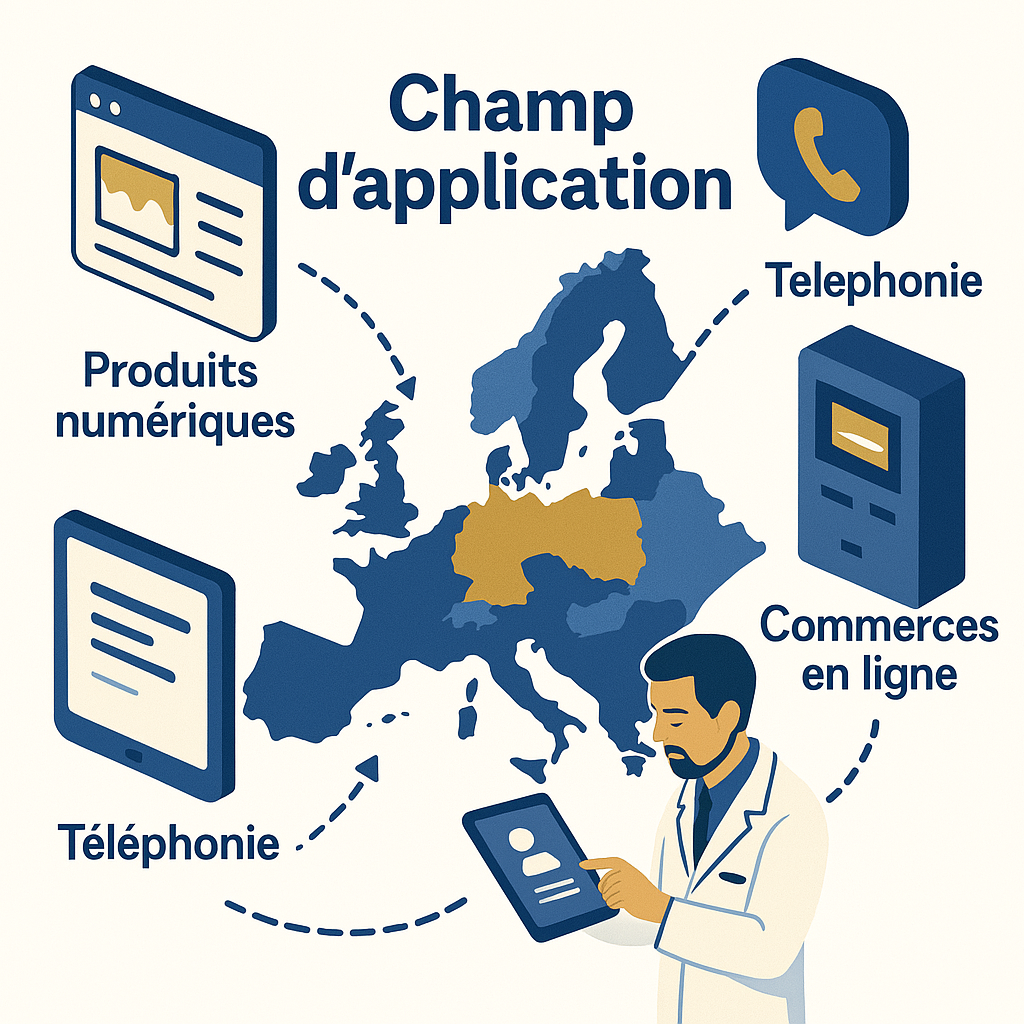Accessibility is a fundamental issue in modern society, affecting both users and suppliers of services and products. The European legislative framework, in particular the European Accessibility Act (EAA), aims to ensure that various products and services are accessible to all, including people with disabilities. But just how far-reaching is this directive? In this analysis, we'll look at the different categories of products and services obliged to comply with accessibility requirements, and we'll also touch on the notable exceptions that arise. All this to help you better understand how to prepare for these new obligations as we approach 2025.
If you need an e-commerce lawyer, contact me!
Which products are covered by the EAA?
The scope of the European Accessibility Directive (EAA) is clearly defined in Article 2, which stipulates which products must meet accessibility requirements from June 28, 2025. This deadline imposes an obligation on manufacturers and service providers to comply with the accessibility standards set by the EAA.
The products concerned include, first and foremost, computer hardware systems intended for the general public, and their operating systems. According to paragraph 25 of the Directive, these systems must be of a multi-purpose nature, enabling them to perform common computing tasks. Typical examples include personal computers, laptops, smartphones and tablets. It is essential to note that specialized computers integrated into other electronic products are not covered by this directive.
Secondly, the Directive applies to various types of self-service terminals. These include payment terminals and equipment such as automatic teller machines, ticket machines and interactive kiosks. Paragraph 26 specifies that these devices must comply with accessibility standards in terms of both hardware and software.
Another type of product covered by the EAA is consumer terminal equipment with interactive computing capabilities, used for electronic communications services. This includes products such as smartphones and tablets, as well as routers and modems that facilitate access to communications services.
Equipment used to access audiovisual services is also included. Here, we're referring to products such as smart TVs, media players and even games consoles, which enable users to enjoy streaming audiovisual content.
Finally, the Directive covers e-readers, defined in paragraph 42 as equipment dedicated to accessing, browsing and reading e-book files. Well-known examples include the Amazon Kindle and Kobo devices, which are specifically designed to meet these needs.
In conclusion, the scope of the EAA includes a variety of essential products that must be accessible by 2025, ranging from consumer electronic equipment to audiovisual service platforms. It is therefore imperative for manufacturers and service providers to start taking steps to ensure their compliance with these accessibility requirements.
What types of services must meet accessibility requirements?
The European Accessibility Directive (EAA) applies not only to products, but also to various types of services, which must comply with the accessibility requirements laid down by this legislative framework. Article 3 of the directive clearly stipulates which services are concerned, focusing on those that have a direct impact on consumers, particularly people with disabilities.
Firstly, a wide range of electronic communication services are included. This includes services provided by telecommunications, such as voice calls, messaging services and data over mobile and fixed networks. These services must guarantee compliant accessibility, enabling all users, whatever their type of disability, to enjoy a seamless experience identical to other members of society.
Secondly, the directive extends to audiovisual services, which play a crucial role in the consumption of digital content. This includes not only TV channels and streaming platforms, but also content rental and distribution services. In line with accessibility standards, these services must incorporate features such as subtitles, audio descriptions and adapted interfaces.
In addition, online services must comply with accessibility requirements. This applies to websites and applications offering a wide range of information and services, whether commercial or public. Article 4 explicitly states that these platforms must be designed to ensure that every user has optimum access to information, whatever their disability.
Finally, self-service terminals complete this list, as their accessibility is also a requirement of the directive. For example, ordering terminals in fast-food restaurants or information kiosks in railway stations must incorporate features that facilitate use by people with physical or sensory limitations.
In short, the services covered by the EAA encompass a wide range of digital and physical interactions whose aim is to ensureuniversal accessibility. Providers of these services must therefore take proactive steps to ensure their compliance with these requirements, with a view to the 2025 deadline.
What are the exceptions to the scope of the EAA?
Although the European Accessibility Directive (EAA) imposes significant obligations on manufacturers and service providers, there are some notable exceptions. These exceptions, addressed in Article 4, specify which types of content are not subject to the accessibility requirements established by the Directive.
Firstly, prerecorded time-based media content published before June 28, 2025 is exempt. This means that any video or audio available online before this date will not be subject to accessibility standards. This framework aims to limit the scope of the requirements to new content, taking into account the efforts that companies can make to comply with these rules on recent media.
Secondly, desktop file formats such as documents or presentations published before the same date will not fall under accessibility requirements. As a result, users don't have to worry about bringing historical documents or past work into compliance.
Thirdly, some online mapping services also escape the rules, as long as essential information is provided in a format accessible for navigable uses. This point allows mapping providers to continue to operate without being subject to the strict requirements, provided they supply critical information in an accessible way.
Another important exception concerns third-party content, which is not under the control or financing of the economic operator concerned. This means that companies are not obliged to guarantee the accessibility of content they have not created or managed, which may ease the constraints on those offering sharing platforms.
Finally, archives, defined as sites or applications containing only content that has not been updated after the specified deadline, are not also subject to the Directive's accessibility requirements. This protects historical resources that do not evolve over time, and enables efforts to be concentrated on new content and services.
Through these exceptions, the Directive recognizes the challenges that businesses may face, while ensuring that the focus is on creating an accessible environment for all through new product and service developments.




